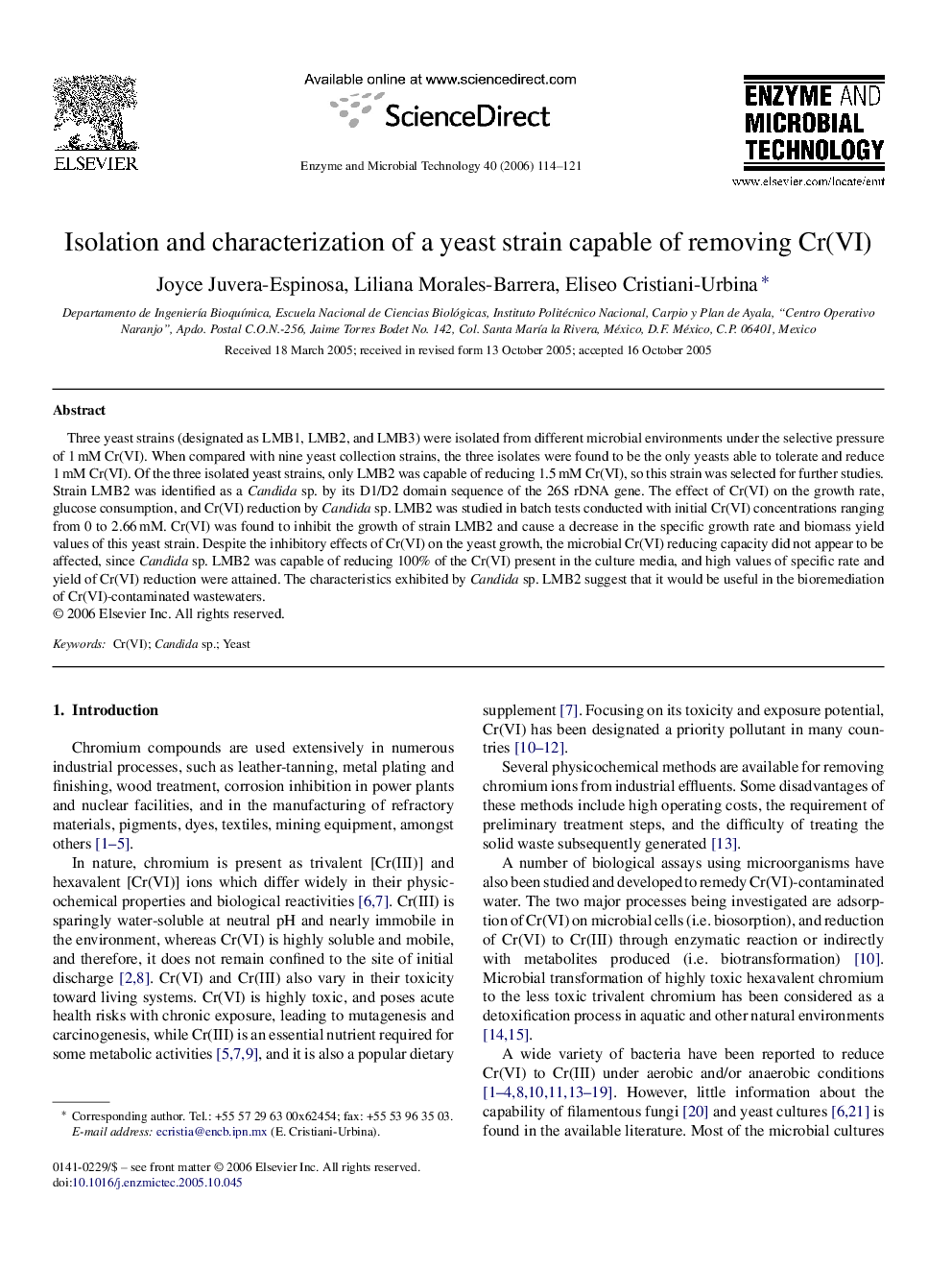| Article ID | Journal | Published Year | Pages | File Type |
|---|---|---|---|---|
| 18218 | Enzyme and Microbial Technology | 2006 | 8 Pages |
Three yeast strains (designated as LMB1, LMB2, and LMB3) were isolated from different microbial environments under the selective pressure of 1 mM Cr(VI). When compared with nine yeast collection strains, the three isolates were found to be the only yeasts able to tolerate and reduce 1 mM Cr(VI). Of the three isolated yeast strains, only LMB2 was capable of reducing 1.5 mM Cr(VI), so this strain was selected for further studies. Strain LMB2 was identified as a Candida sp. by its D1/D2 domain sequence of the 26S rDNA gene. The effect of Cr(VI) on the growth rate, glucose consumption, and Cr(VI) reduction by Candida sp. LMB2 was studied in batch tests conducted with initial Cr(VI) concentrations ranging from 0 to 2.66 mM. Cr(VI) was found to inhibit the growth of strain LMB2 and cause a decrease in the specific growth rate and biomass yield values of this yeast strain. Despite the inhibitory effects of Cr(VI) on the yeast growth, the microbial Cr(VI) reducing capacity did not appear to be affected, since Candida sp. LMB2 was capable of reducing 100% of the Cr(VI) present in the culture media, and high values of specific rate and yield of Cr(VI) reduction were attained. The characteristics exhibited by Candida sp. LMB2 suggest that it would be useful in the bioremediation of Cr(VI)-contaminated wastewaters.
